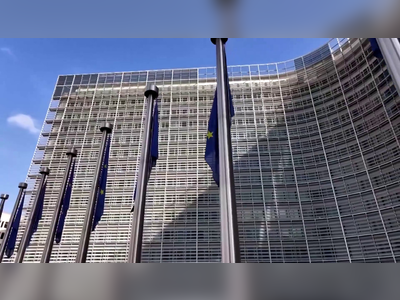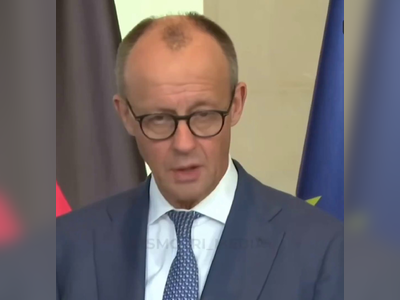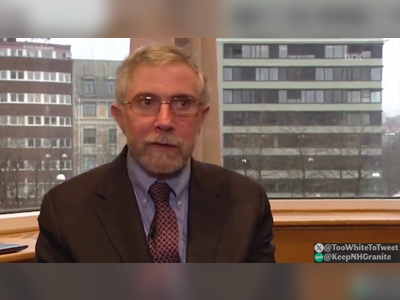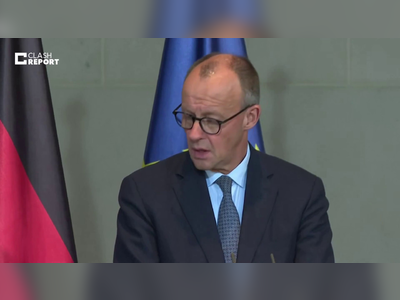
Trump Engages in Dialogue Over Zaporizhzhia Nuclear Power Plant Amid Ongoing Russian Occupation
U.S. President Donald Trump proposes support for regaining control of Europe's largest nuclear facility, currently under Russian administration, during discussions with Ukrainian President Volodymyr Zelenskyy.
KYIV — U.S. President Donald Trump has conveyed his interest in facilitating a resolution concerning the Zaporizhzhia Nuclear Power Plant (ZNPP), the largest nuclear facility in Europe, which is presently under Russian control.
During a recent conversation with Ukrainian President Volodymyr Zelenskyy, Trump proposed efforts to address the complexities surrounding the Russian occupation of the plant, an issue with significant implications for Ukraine’s energy sector and national security.
Zelenskyy detailed the conversation in a press conference held in Oslo, emphasizing the necessity for control of the ZNPP to revert to Ukraine for the plant’s effective operation.
"If it is not Ukrainian, it will not work for anyone.
This is illegal,” Zelenskyy remarked, while acknowledging a potential partnership if the U.S. aimed to assist in regaining control and modernizing the facility.
The Zaporizhzhia plant, located near Enerhodar, has been a critical site since it was occupied by Russian forces in March 2022. Previously, it supplied about 20 percent of Ukraine’s electricity, generating six gigawatts of power.
The facility has been non-operational since the war's onset, with Russian authorities overseeing it through a management entity linked to Rosatom, the state nuclear energy corporation of Russia.
This occupation is viewed as a violation of international law by numerous environmental and civic organizations.
U.S. Secretary of State Marco Rubio articulated Trump's proposition, highlighting that U.S. ownership and management could provide essential protection for the plant and bolster Ukraine's overall energy infrastructure.
However, Zelenskyy clarified that discussions did not encompass ownership issues, reiterating that the ZNPP remains a Ukrainian asset.
The negotiations surrounding the ZNPP are also interlinked with broader talks regarding a minerals deal that could grant the United States preferential access to critical raw materials in Ukraine.
This aspect underscores the energy demands associated with mining operations, which heavily rely on a stable electricity supply, thereby elevating the ZNPP's strategic importance for both nations.
Ukrainian officials have stated that any potential solution involving the ZNPP is dependent on the withdrawal of Russian troops from Enerhodar.
They have raised concerns about the difficult conditions faced by the plant’s workers, many of whom are reportedly subjected to coercive measures imposed by Russian authorities.
Additionally, Zelenskyy highlighted ongoing challenges, including damage to the facility's cooling systems resulting from the destruction of the Kakhovka dam, indicating critical infrastructural issues.
He noted that any repair efforts would necessitate the involvement of Ukrainian personnel and local oversight, suggesting that the restoration process could be extensive, potentially taking up to two years to bring the plant back to operational status.
Zelenskyy reaffirmed that trust would be a significant obstacle in restarting the facility as long as Russian military presence continues in the area, insisting on their withdrawal as a prerequisite for any discussions surrounding the nuclear plant’s future.
During a recent conversation with Ukrainian President Volodymyr Zelenskyy, Trump proposed efforts to address the complexities surrounding the Russian occupation of the plant, an issue with significant implications for Ukraine’s energy sector and national security.
Zelenskyy detailed the conversation in a press conference held in Oslo, emphasizing the necessity for control of the ZNPP to revert to Ukraine for the plant’s effective operation.
"If it is not Ukrainian, it will not work for anyone.
This is illegal,” Zelenskyy remarked, while acknowledging a potential partnership if the U.S. aimed to assist in regaining control and modernizing the facility.
The Zaporizhzhia plant, located near Enerhodar, has been a critical site since it was occupied by Russian forces in March 2022. Previously, it supplied about 20 percent of Ukraine’s electricity, generating six gigawatts of power.
The facility has been non-operational since the war's onset, with Russian authorities overseeing it through a management entity linked to Rosatom, the state nuclear energy corporation of Russia.
This occupation is viewed as a violation of international law by numerous environmental and civic organizations.
U.S. Secretary of State Marco Rubio articulated Trump's proposition, highlighting that U.S. ownership and management could provide essential protection for the plant and bolster Ukraine's overall energy infrastructure.
However, Zelenskyy clarified that discussions did not encompass ownership issues, reiterating that the ZNPP remains a Ukrainian asset.
The negotiations surrounding the ZNPP are also interlinked with broader talks regarding a minerals deal that could grant the United States preferential access to critical raw materials in Ukraine.
This aspect underscores the energy demands associated with mining operations, which heavily rely on a stable electricity supply, thereby elevating the ZNPP's strategic importance for both nations.
Ukrainian officials have stated that any potential solution involving the ZNPP is dependent on the withdrawal of Russian troops from Enerhodar.
They have raised concerns about the difficult conditions faced by the plant’s workers, many of whom are reportedly subjected to coercive measures imposed by Russian authorities.
Additionally, Zelenskyy highlighted ongoing challenges, including damage to the facility's cooling systems resulting from the destruction of the Kakhovka dam, indicating critical infrastructural issues.
He noted that any repair efforts would necessitate the involvement of Ukrainian personnel and local oversight, suggesting that the restoration process could be extensive, potentially taking up to two years to bring the plant back to operational status.
Zelenskyy reaffirmed that trust would be a significant obstacle in restarting the facility as long as Russian military presence continues in the area, insisting on their withdrawal as a prerequisite for any discussions surrounding the nuclear plant’s future.
AI Disclaimer: An advanced artificial intelligence (AI) system generated the content of this page on its own. This innovative technology conducts extensive research from a variety of reliable sources, performs rigorous fact-checking and verification, cleans up and balances biased or manipulated content, and presents a minimal factual summary that is just enough yet essential for you to function as an informed and educated citizen. Please keep in mind, however, that this system is an evolving technology, and as a result, the article may contain accidental inaccuracies or errors. We urge you to help us improve our site by reporting any inaccuracies you find using the "Contact Us" link at the bottom of this page. Your helpful feedback helps us improve our system and deliver more precise content. When you find an article of interest here, please look for the full and extensive coverage of this topic in traditional news sources, as they are written by professional journalists that we try to support, not replace. We appreciate your understanding and assistance.











